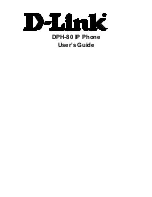
183
182
OTHER FUNCTIONS
What about children using wireless phones?
The scientific evidence does not show a danger to users of wireless phones, including children and teenagers.
If you want to take steps to lower exposure to radiofrequency energy (RF), the measures described above
would apply to children and teenagers using wireless phones. Reducing the time of wireless phone use and
increasing the distance between the user and the RF source will reduce RF exposure.
Some groups sponsored by other national governments have advised that children be discouraged from using
wireless phones at all. For example, the government in the United Kingdom distributed leaflets containing
such a recommendation in December 2000. They noted that no evidence exists that using a wireless phone
causes brain tumors or other ill effects. Their recommendation to limit wireless phone use by children was
strictly precautionary; it was not based on scientific evidence that any health hazard exists.
FCC RF EXPOSURE INFORMATION
Read this information before using your phone
In August 1996 the Federal Communications Commission (FCC) of the United States with its action in Report
and Order FCC 96-326 adopted an updated safety standard for human exposure to radio frequency (RF)
electromagnetic energy emitted by FCC regulated transmitters. Those guidelines are consistent with the safety
standard previously set by both U.S. and international standards bodies. The design of this phone complies
with the FCC guidelines and these international standards.
Use only the supplied or an approved antenna. Unanthorized antennas, modifications, or attachments could
impair call quality, damaged the phone, or result in violation of FCC regulations.
Do not use the phone with a damaged antenna. If a damaged antenna comes into contact with the skin, a
minor burn may result. Please contact your local dealer for replacement antenna.
Body-worn Operation
For body-worn operation, the SAR testing of the device was performed using a 1.5cm air gap, which
corresponds to using clips and holsters that contain no metallic components and meets FCC RF exposure
guidelines. The use of accessories that do not satisfy these requirements may not comply with FCC RF exposure
compliance and should be avoided.




































